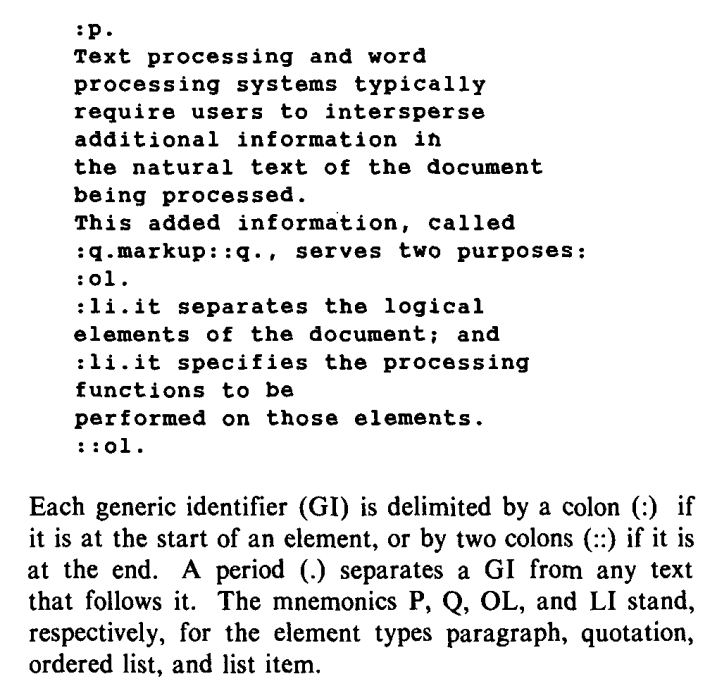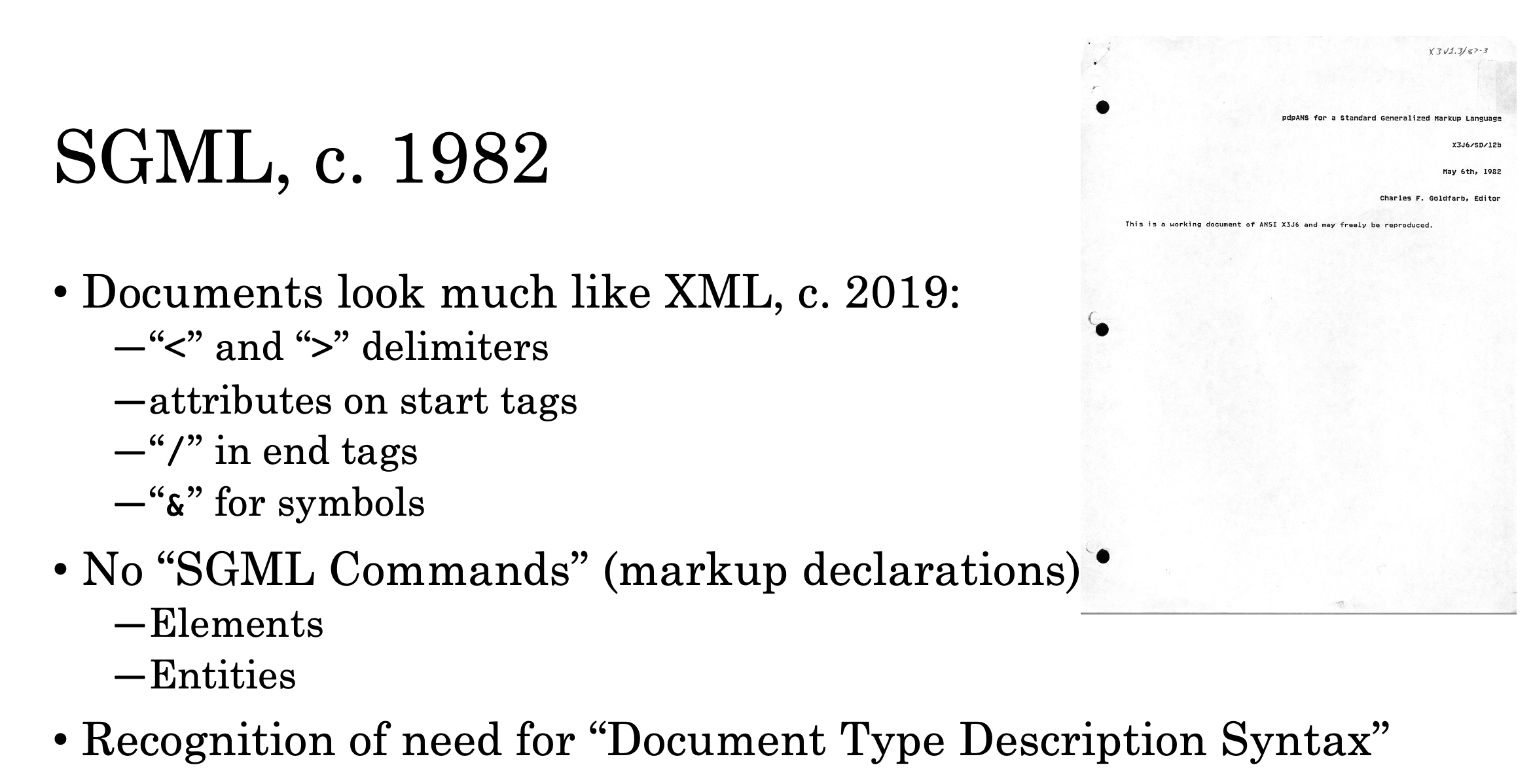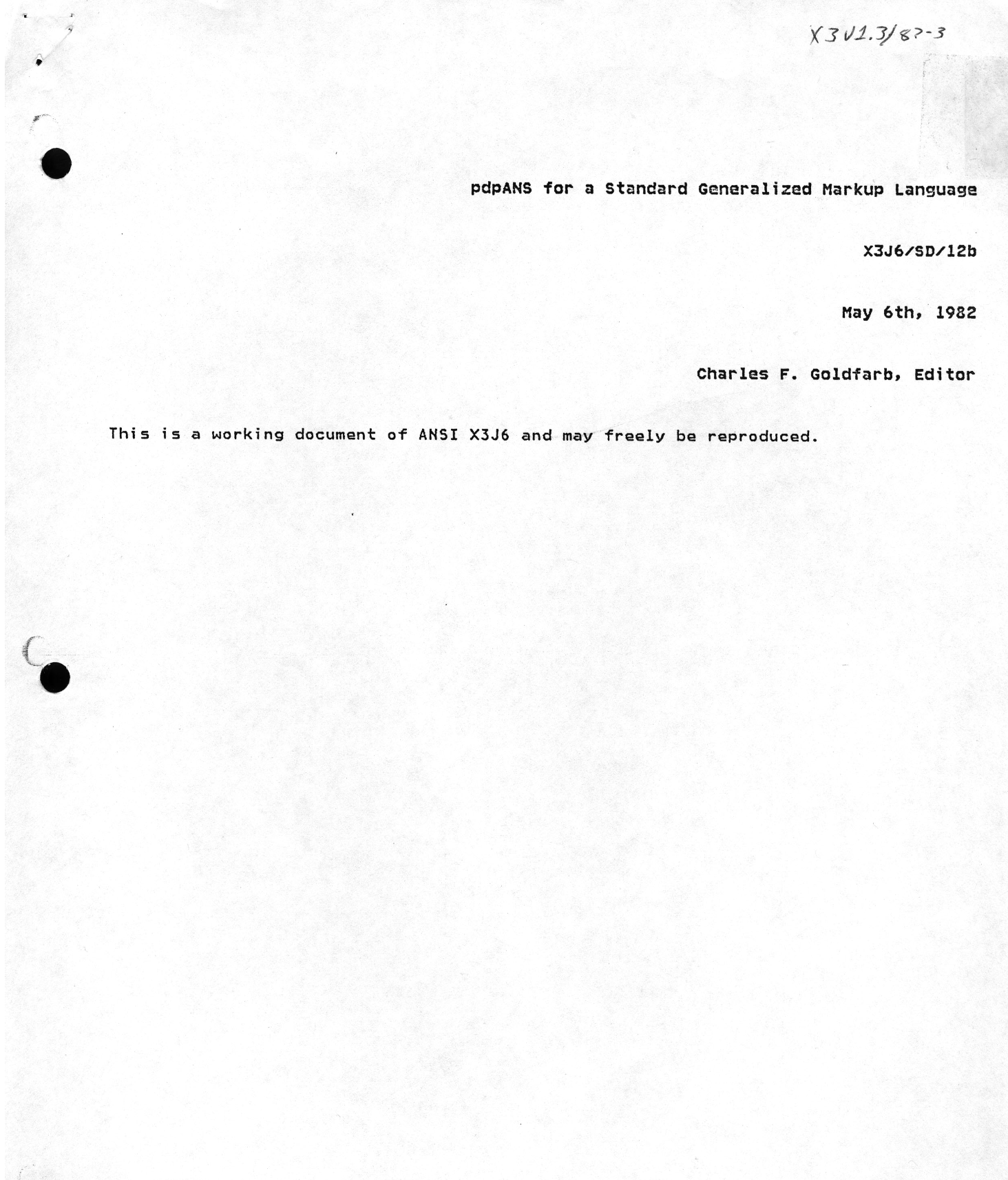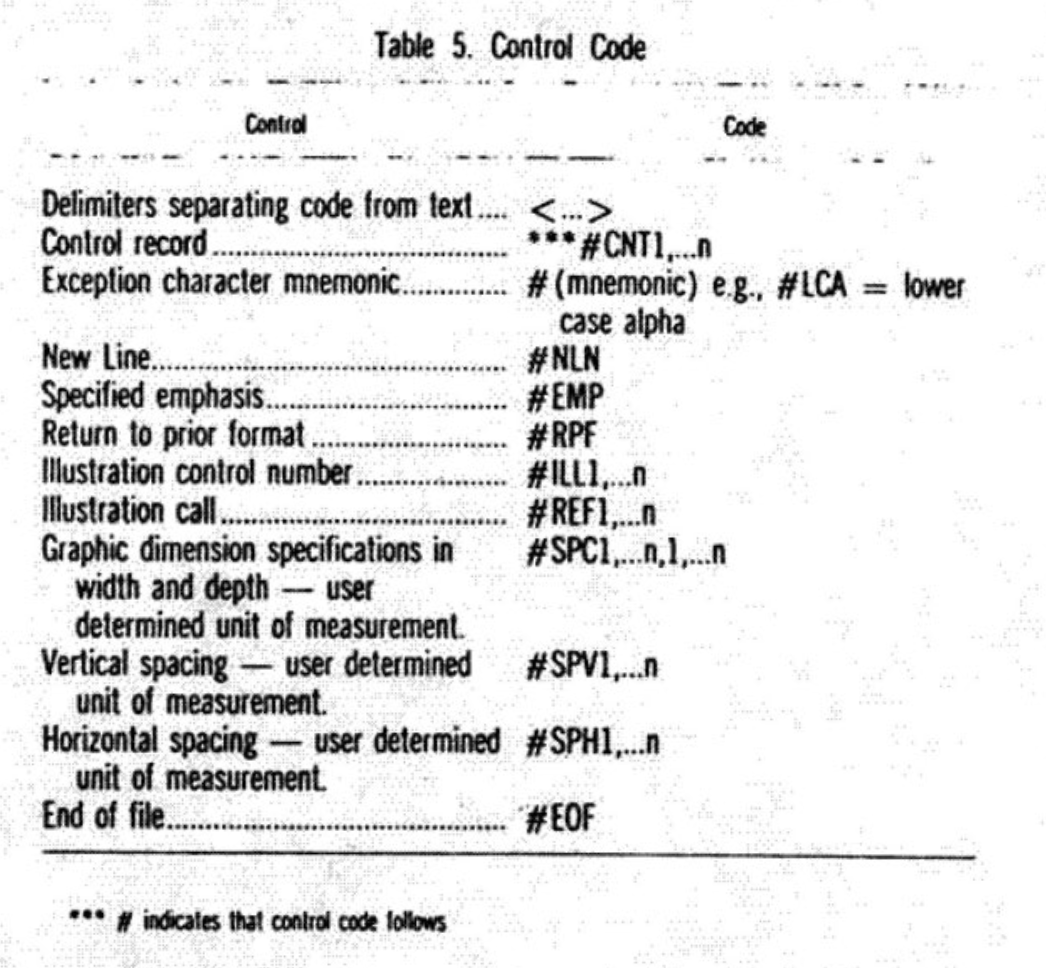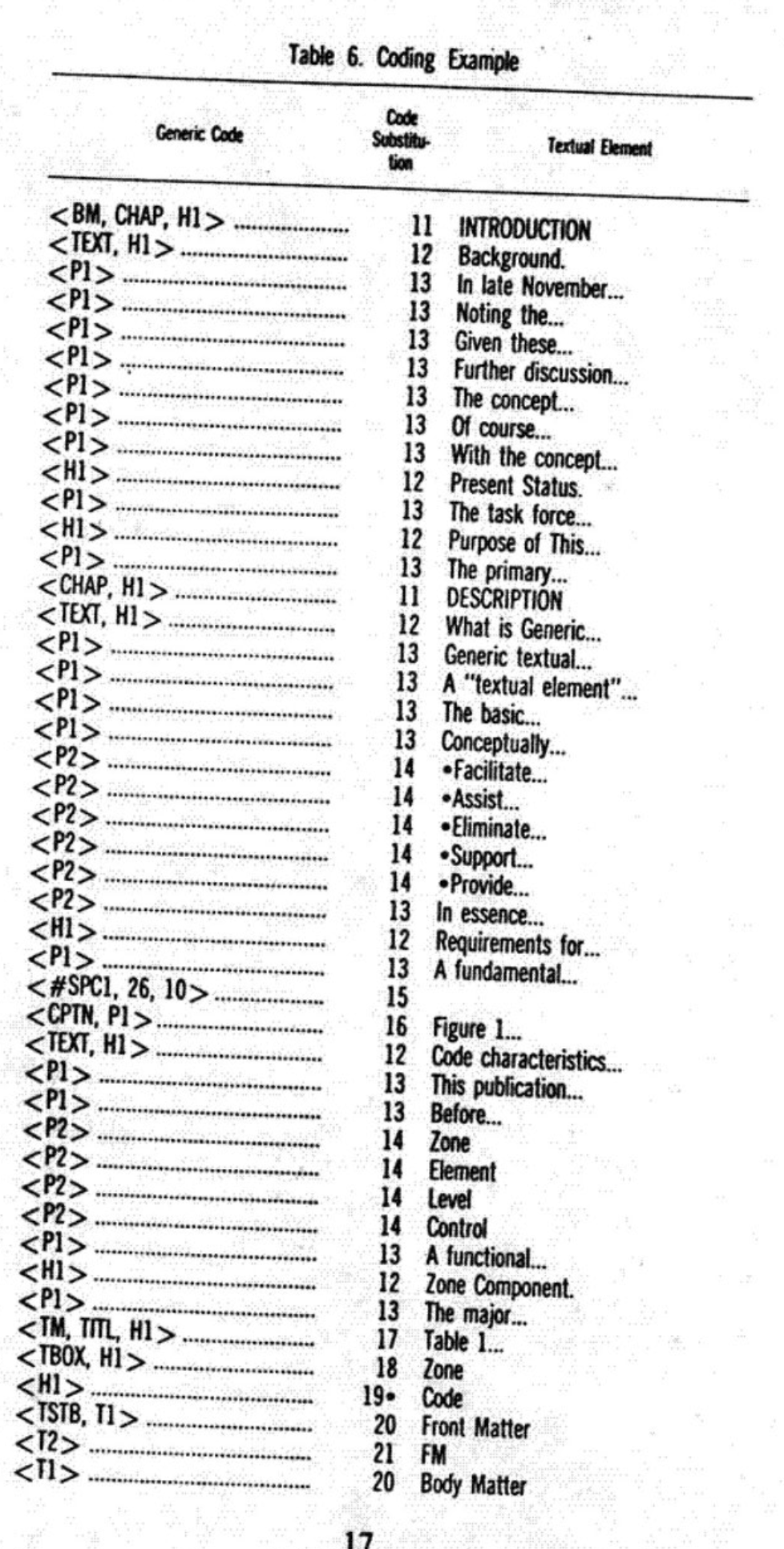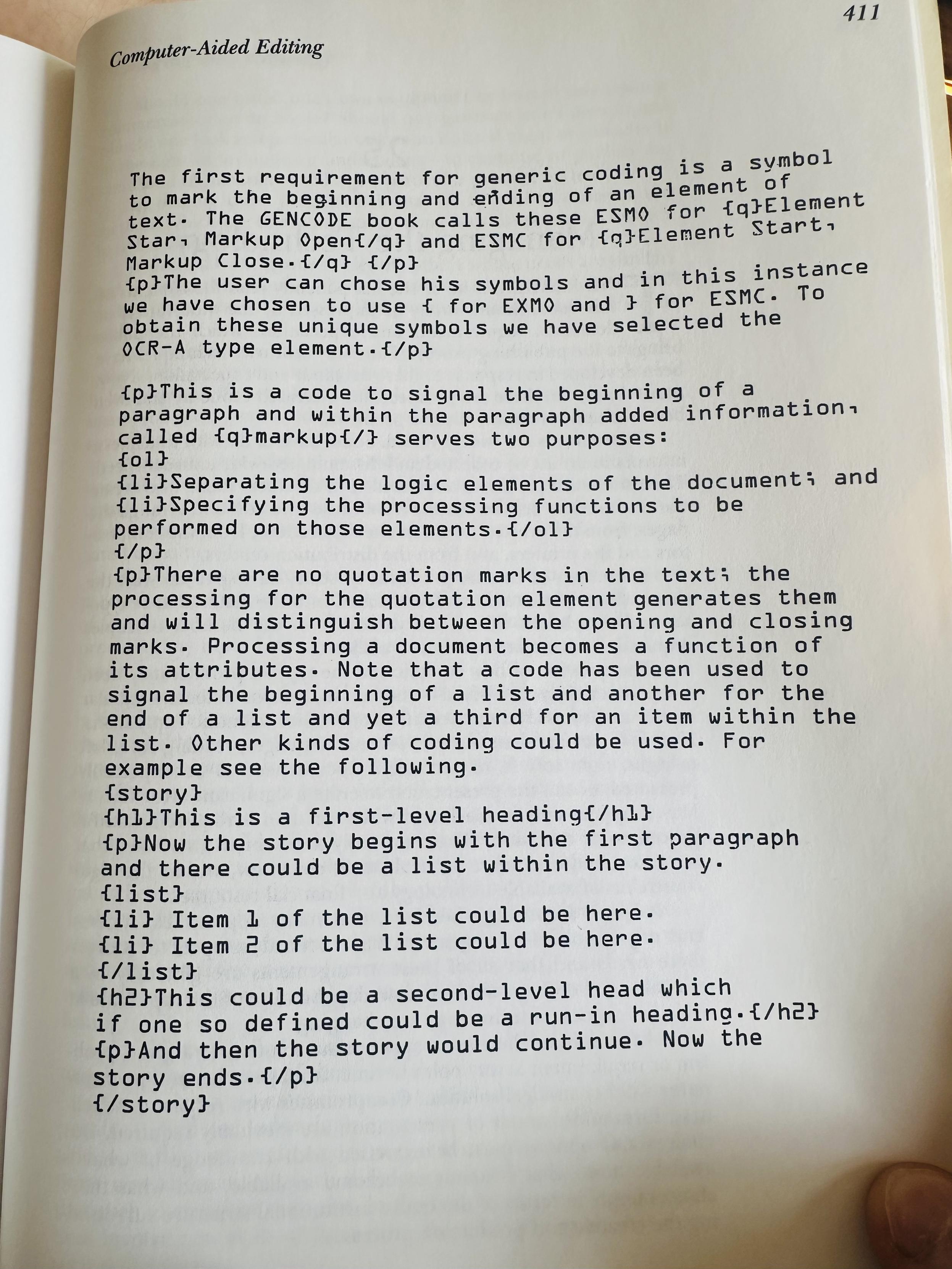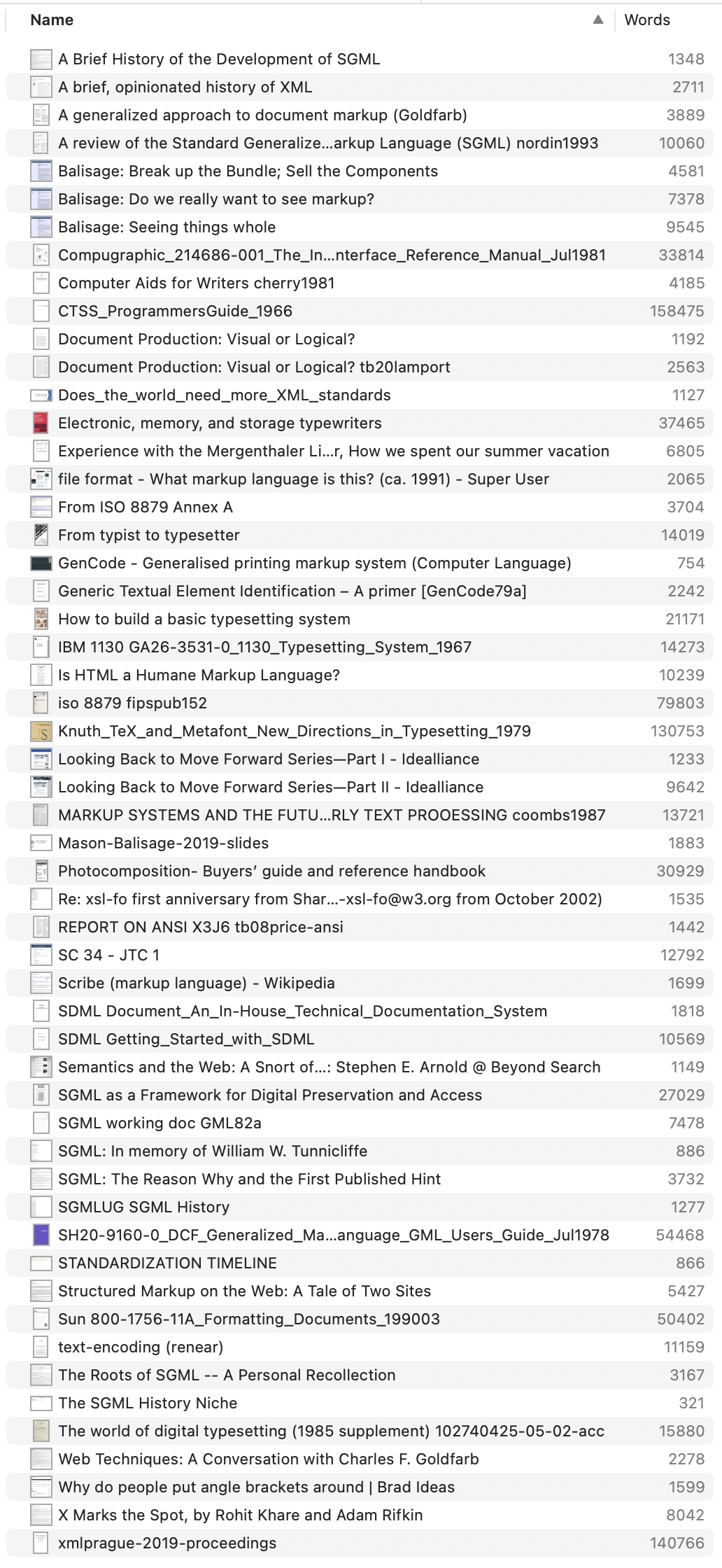Marcin Wichary
mwichary@mastodon.onlineOnce in a while I imagine how much more pleasant HTML would be to type if only different brackets were originally chosen.
[div]
[p]
[a href=‘’][/a]
[/p]
[/div]
No single Shift press was necessary here.
';DROP TABLE foxes;--
DropTableFoxes@stackunderflow.com@mwichary ahh, so BBCode had it right?
Ernie Smith
ernie@writing.exchange@mwichary This absolutely sounds right. Make HTML bbcode again
Marcin Wichary
mwichary@mastodon.online@hesthamar Ha! Is it actually nice to type HTML on that layout? Feels very bottom left-y.
@mwichary you realise the ease of access of all these varies wildly depending on whether or not your keyboard is American right
Marcin Wichary
mwichary@mastodon.online@darkphoenix Always love the one random Masto know-it-all holier-than-thou passerby, keep it up! That’s what makes everyone love this network.
BITNACHT
bitnacht@bitbang.social@mwichary You most certainly are aware that on French keyboards (which are in use at CERN) < does not need shift (the key it is right next to/of shift) and [ and ] need Alt Gr and a weird hand movement.
(Another factor was that you cant get good aftermarket German keycaps, but I have stopped using German keyboards mainly because of [, ] and {, } and now I have to choose whether to struggle, when typing quotation marks or to use key combinations that aren’t uniform across software/systems.)
PulkoMandy
pulkomandy@mastodon.tetaneutral.net@bitnacht @mwichary what kind of keyboard did NeXT stations use? France still does not have a single keyboard layout, with Apple doing its own thing, so I wouldn't be surprised if NeXT also did things differently. That is, assuming they bothered to do an azerty layout at all, and that CERN would use it, knowing that they are partially in switzerland and a very international thing anyways.
Also, the <> date back from SGML of which HTML is a subset, so that's not the right keyboards to look at
BITNACHT
bitnacht@bitbang.social@pulkomandy @mwichary Hmm, I didn't think about SGML. You have a point there. I remember seeing a NeXT azerty-keyboard (maybe I even owned one for a while). I also doubt the NeXT at CERN had a French keyboard. But it certainly was a design goal, to make all people working at CERN happy with the WWW.
Marcin Wichary
mwichary@mastodon.onlineNow curious exactly why SGML chose angle brackets! Would love to see a written statement. This is the closest I got to an answer, but it’s not really an answer.
mhd
mhd@tilde.zone@mwichary EBCDIC only has regular parentheses and angle brackets in its base encoding page, and IBM was pretty big into SGML.
Marcin Wichary
mwichary@mastodon.online@mhd Now I’m curious what were the most common IBM systems for those, and what are their keyboards like.
buherator
buherator(slightly related: I recently learned that C syntax differs so wildly from Pascal, because the former was designed by US keyboard users while the latter was from EU)
Marcin Wichary
mwichary@mastodon.online@buherator It was the tone of this one that bothered me.
@buherator @mwichary oh that’s *fascinating - I kinda wanna know more about this now, heh. Makes sense tho - a bunch of these brackets, particularly [] and {}, are a lot more easily accessible on a US layout than, say, a German one where umlauts take up those spaces and you need to contort yourself to alt-gr for that one
Marcin Wichary
mwichary@mastodon.online@darkphoenix @buherator A bit of a progress in figuring it out here, but not much yet: https://tilde.zone/@mhd/114715005404149186
Ironically, I wonder if the answer is even online.
Marcin Wichary
mwichary@mastodon.onlineThis is from the standard, which I found online here: https://nvlpubs.nist.gov/nistpubs/Legacy/FIPS/fipspub152.pdf
(That footnote is prescient.)
There are references to an 1980 draft, but wonder if that would be explained there. There probably also also working group notes…
@mwichary Having grown up on a TI Explorer LispM keyboard, for a *very* long time I remapped my "[{" and "]}" keys to "([" and ")]" and put {} on F10/F11.
I eventually gave up because it meant I couldn't type on anyone else's keyboard nor they mine.
Marcin Wichary
mwichary@mastodon.online@jwz Yeah, I went through the same thought process once. If key remapping was easier on common operating systems, that would be more of an option…
Erik Ableson
erik@mastodon.infrageeks.socialmhd
mhd@tilde.zone@mwichary One of the more important items in the timeline here was the LEXX editor (for lexicographers), and that was commonly access width IBM 3270 type terminals. That means a lot of Model F keyboards, so plenty of keys.
It's just that angle "brackets" are the least common denominator. I'm also reminded of the C "trigraphs" where you could write ??< instead of {.
Internationally, those brackets aren't as ubiquitous or easy to reach, as that place is often taken by other letters or accented forms.
Marcin Wichary
mwichary@mastodon.online@mhd Interestingly, on the 5251 both <> and {} are similarly accessible.
Marcin Wichary
mwichary@mastodon.onlinePoring over SGML Handbook from Goldfarb himself (Goldfarb is the “G” in GML).
SGML had some wild features!
Marcin Wichary
mwichary@mastodon.onlineVery interesting! https://jtc1info.org/sd-2-history/jtc1-subcommittees/sc-34/
Not sure those are available online…
Marcin Wichary
mwichary@mastodon.onlineI sent some emails, but I am not sure if this is going to go anywhere. It’s wild that there isn’t an authoritative answer online, given how much of modern “online” uses HTML and angle brackets.
Norm Tovey-Walsh
ndw@toot.wales@mwichary See also, stupid SGML tricks: https://www.balisage.net/Proceedings/vol17/html/Walsh01/BalisageVol17-Walsh01.html#roadnottaken
Marcin Wichary
mwichary@mastodon.online@ndw The author is one of the people I’m trying to reach! (If they’re still around. They published another paper at the same conference in 2019.)
Michael Piotrowski
mxp@mastodon.acm.org@mwichary SGML descended from GML, which descended from SCRIBE, which descended from ROFF. As described in “A Generalized Approach to Document Markup,” (1981) https://doi.org/10.1145/800209.806456, GML used colon and period as delimiters.
Marcin Wichary
mwichary@mastodon.online@mxp Yes, but this is not getting us closer to the <> answer, and this is alas not the “chicken scratches” as mentioned above.
Michael Piotrowski
mxp@mastodon.acm.org@mwichary I explicitly do not discuss the Concrete Reference Syntax (i.e., the angle brackets) in this paper, but some other historical idiosyncrasies:
Michael Piotrowski (2019). “History and the future of markup”. In: Proceedings of XML Prague 2019 (Prague, Feb. 7–9, 2019). Ed. by Jiří Kosek, pp. 323–333. URL: http://archive.xmlprague.cz/2019/files/xmlprague-2019-proceedings.pdf#page=335
Michael Piotrowski
mxp@mastodon.acm.org@mwichary No, it doesn’t, but it shows that the decision to go with <> must have been taken later.
Marcin Wichary
mwichary@mastodon.onlineMore from the same person writing about “chicken scratches.” Includes a tantalizing cover page of a working document.
https://www.balisage.net/Proceedings/vol23/html/Mason01/BalisageVol23-Mason01.html
Ysegrim
ysegrim@furry.engineer@mwichary You are aware that, as opposed to <>, {}[] are not even available with Shift key on non-US keyboards? So we need to use AltGr + some unlabeled keycap every time?
Marcin Wichary
mwichary@mastodon.online@ysegrim I am. I wrote a little Mastodon post. I’m not trying to solve all of international keyboard problems.
ppk 🇪🇺
ppk@front-end.social@mwichary My theory is that <> were chosen because they were the only type of brackets that do not have special meaning in regexp.
But I could easily be wrong.
Marcin Wichary
mwichary@mastodon.online@ppk Yeah, I’d love just to see the considerations spelled out.
Michael Piotrowski
mxp@mastodon.acm.org@mwichary Later than the 1981 paper. Given that the first working draft standard was published in 1980, the “chicken scratches” are thus likely to refer to a later draft; given the year 1983, presumably the 6th working draft, which was published as GCA industry standard, as mentioned in the SGML Handbook, p. 569.
Note also that Annex A of the Standard (p. 5 in the Handbook) is an SGMLized version of the 1981 paper.
Marcin Wichary
mwichary@mastodon.online@mxp Sorry, not sure I follow the logic – the paper is from 1981, but talks about something much older. It’s entirely possible SGML already had <> then, but a) the paper was not about SGML, and b) it might have not been advisable to talk about work in progress anyway.
Marcin Wichary
mwichary@mastodon.online@mxp This puts it no later than 1982. I just wish it was possible to see those working drafts… https://mastodon.online/@mwichary/114715537112186412
adamrice
adamrice@c.im@mwichary Once in a while, I wonder what it would be like if the guys who created ASCII had built in “format-shift-in” and “format-shift-out” codes.
Norm Tovey-Walsh
ndw@toot.wales@mwichary Well, if you mean the author of the stupid SGML tricks paper, that'd be, uh, looks around nervously, me. Who else are you looking for?
Marcin Wichary
mwichary@mastodon.online@ndw Sorry, got the papers mixed up! Mostly just trying to figure out how SGML got its brackets. https://mastodon.online/@mwichary/114715424372809982
Jeremy Keith
adactio@mastodon.social@mwichary @ppk Tim Berners-Lee was just copying the angle brackets from SGML …and that was a version of GML.
In GML you could specify the characters you wanted to use for the tags.
So a decision was taken sometime between GML and SGML to use angle brackets.
Time to track down Charles Goldfarb and ask him about it!
Norm Tovey-Walsh
ndw@toot.wales@mwichary No problem. I know a couple of old time SGMLers. I've asked around and if I get any interesting responses, I'll let you know.
Marcin Wichary
mwichary@mastodon.online@ndw Or, if anyone has records of the proceedings or working docs!
Jon Bosak
bosak@flx.masto.host@timbray @erik @mwichary The angle brackets come from SGML, which became an ISO standard in 1986. But they were just there as an example; SGML allows you declare any delimiter you like for this role. Or to eliminate visible delimiters by writing the DTD to make their existence necessarily implied. It was features like these that made SGML so f*cking hard to implement, and XML was created by eliminating them.
Marcin Wichary
mwichary@mastodon.onlineMarcin Wichary
mwichary@mastodon.onlineStill digging.
“To encourage acceptance, the authors of the SGML specification followed other design objectives: the ability to enter text and markup on "the millions of existing text entry devices"; no character set dependency; no national language bias; and markup usable by both humans and programs.”
https://www.loc.gov/preservation/digital/formats/fdd/fdd000465.shtml
Stewart Russell
scruss@xoxo.zone@mwichary I worked at a publishing shop that generated SGML, but had the < and > defined the other way around. So tags looked like >this<ewww ...>/this<
I really miss the </> close last tag. HoTMeTaL, IIRC, used to support it
Marcin Wichary
mwichary@mastodon.online@scruss Some text editors allow you to use it and then auto expand.
Glenn Fleishman
glennf@zeppelin.flights@mwichary have you come across the predecessor? I was typesetting on a 1970s CompuGraphic in the 1980s and it was similar to SGML syntax particularly with surrounding stuff with <tag>. Someone told me years ago that CompuGraphic had borrowed or developed a spec that fed into SGML.
Marcin Wichary
mwichary@mastodon.online@glennf I think technically SGML comes from GML but indeed I found some other surrounding codenames. Will investigate!
Marcin Wichary
mwichary@mastodon.online@glennf You might be onto something – I just got a solid lead pointing to at most 1979 and Graphic Communications Association (GCA) GenCode, not GML. I wonder if it is connected with CompuGraphic. If only we knew someone with a museum filled with info about that kinda stuff…
Marcin Wichary
mwichary@mastodon.onlineThanks to my emails but also people who were participating today, I got an email from one of the key players that sent me some great leads and info to investigate! (Including a PDF of the report I was salivating over earlier.)
It turns out the angle brackets are at most from 1979, if not earlier. More to research!
Marcin Wichary
mwichary@mastodon.onlineThis is the earliest appearance of < > I know of today, from 1979.
This thread might slow down, as next step will be some interlibrary requests!
Marcin Wichary
mwichary@mastodon.onlineThis might be more interesting. <P1> and <P2>! <#> for styling! Excited to dig and learn more.
Geoff Coffey
gwcoffey@bookstodon.com@mwichary I feel like the answer here is going to end up being that angle brackets are balanced, and less likely to appear in the kinds of documents they envisioned being marked up than square brackets or parentheses, thus requiring less escaping. But this is very much a guess.
Marcin Wichary
mwichary@mastodon.online@gwcoffey Yeah, I think we all suspect the answer. I just wanna *see* it.
Marcin Wichary
mwichary@mastodon.onlineThey are *killing me*. In the old article about the history of it that I just discovered, they are using… square brackets.
sayrer
sayrer@mastodon.social@mwichary I bet the Balisage folks will know. @ndw is on here, but another guy named James David Mason seems to have been there. https://www.balisage.net/Proceedings/vol23/html/Mason01/BalisageVol23-Mason01.html
sayrer
sayrer@mastodon.socialMarcin Wichary
mwichary@mastodon.onlinechris@strafpla.net
chris@mstdn.strafpla.net@mwichary The pain! What problem does this abomination of a rule solve?
alex.tm
alextm@mstdn.ca@mwichary I think the readability suffers a bit using square brackets instead of angled. It wouldn’t be much of a problem in a code editor with a colour theme though I guess.
kwaktrap
kwaktrap@mastodon.social@mwichary "no character set dependency; no national language bias" might have made [] and {} unpopular choices in an international context at the time; there were non-US ASCII variants which didn't have these characters. (Strictly ISO 646 variants I suppose..)
The standardized form of the C language had a grim workaround for this: https://en.wikipedia.org/wiki/Digraphs_and_trigraphs_(programming)#C
Marcin Wichary
mwichary@mastodon.online@kwaktrap That’s very interesting! I don’t think I knew about this.
cos
cos@aus.social@mwichary Now I’m wondering where WordPerfect was inspired to use square brackets…
Jonas Downey
jonasdowney@mastodon.social@mwichary if the next example uses (h1)parentheses(/h1), then we can be certain you’re being trolled
Marcin Wichary
mwichary@mastodon.online@jonasdowney I’m worried that it will all amount to a big fat nothing… but we’ll see.
Marcin Wichary
mwichary@mastodon.onlineIs this going to go anywhere? Unclear. But I like this part.
Marcin Wichary
mwichary@mastodon.onlineI like scanning and putting up interlibrary stuff on Internet Archive.
This is the first one I got. Not sure yet if it’s going to help with the HTML bracket investigation, but maybe it’ll help someone else! https://archive.org/details/gca-standard-101-1983






